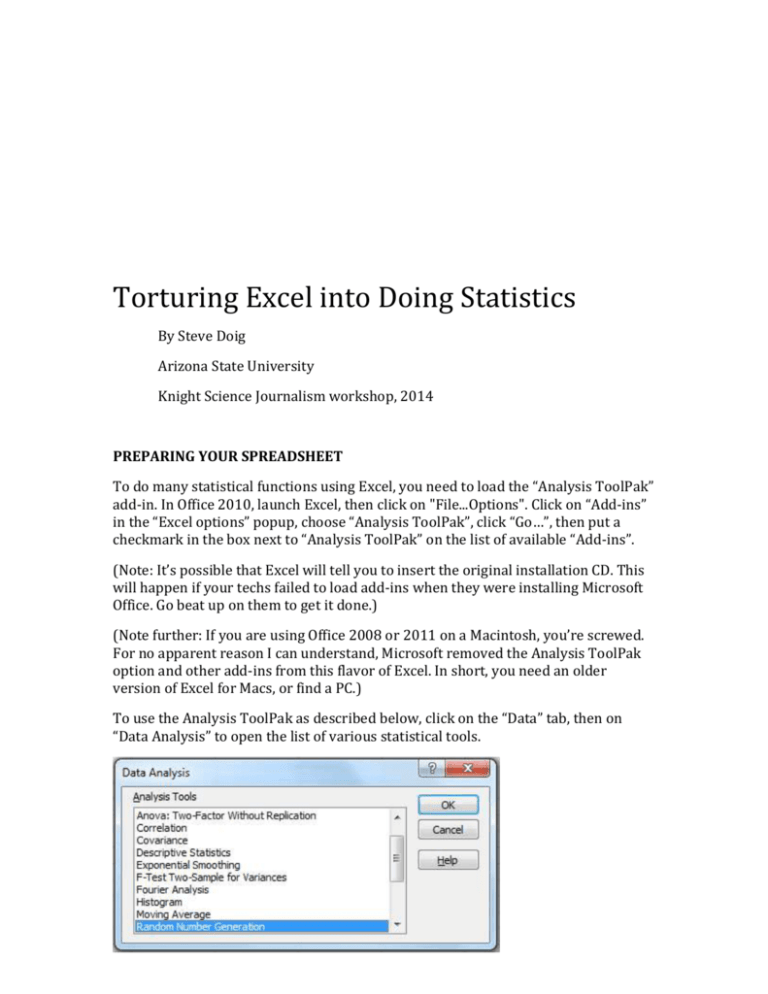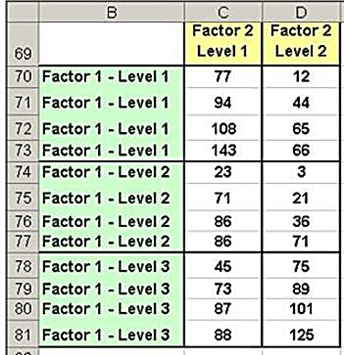

- #TWO WAY ANOVA IN EXCEL 2010 HOW TO#
- #TWO WAY ANOVA IN EXCEL 2010 INSTALL#
- #TWO WAY ANOVA IN EXCEL 2010 SERIES#
#TWO WAY ANOVA IN EXCEL 2010 HOW TO#
How to run Excel file from Windows 10 Task Scheduler Go to the Windows Task Scheduler and create task. Click on Options,select Homogeneity of variance test,and press Continue.Click on Post Hoc,select Tukey,and press Continue.Drag and drop your independent variable into the Factor box and dependent variable into the Dependent List box.How to do one way ANOVA analysis of variance?Ĭlick on Analyze -> Compare Means -> One-Way ANOVA (3) In the popping out Axis Labels dialog box,please specify the Unit Price column (except the column name) as axis label range.(2) Click the Edit button in the Horizontal (Category) Axis Labels section.
#TWO WAY ANOVA IN EXCEL 2010 SERIES#
(1) In the Legend Entries (Series) section,select one of series as you need.

To do this, enter Ctrl-m and select the Three Factor ANOVA option from the menu that appears. How do you do a three way ANOVA in Excel? Step 2: Click “ANOVA two factor with replication” and then click “OK.” The two way ANOVA window will open.
#TWO WAY ANOVA IN EXCEL 2010 INSTALL#
Two Way ANOVA in Excel with replication: Steps Step 1: Click the “Data” tab and then click “Data Analysis.” If you don’t see the Data analysis option, install the Data Analysis Toolpak. When you select the data, Excel shows you a small icon on the bottom right side, and when you click on this icon it opens the quick analysis tool. The button to open the quick analysis tool is not listed anywhere on the Excel ribbon. Where is the quick analysis tool in Excel 2010? How do I find data analysis in Excel 2010? First, we will calculate the mean for all three groups along with the overall mean: Step 1: Calculate the group means and the overall mean.Check the box for Means plot, then click Continue.

Add the variable Sprint to the Dependent List box, and add the variable Smoking to the Factor box.Click Analyze > Compare Means > One-Way ANOVA.In the Add-Ins box, check the Analysis ToolPak check box, and then click OK.In the Manage box, select Excel Add-ins and then click Go.Click the File tab, click Options, and then click the Add-Ins category.In the Add-Ins available box, select the Analysis ToolPak check box, and then click OK. In the Manage box, select Excel Add-ins and then click Go. Click the File tab, click Options, and then click the Add-Ins category. These instructions apply to Excel 2010, Excel 2013 and Excel 2016.



 0 kommentar(er)
0 kommentar(er)
